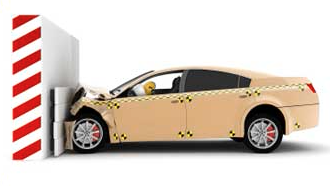What to look for when buying a vehicle

Shopping for a new vehicle is not only confusing with all the variety on the market but the language spoken by the automotive industry isn’t always clear on what you are actually buying.
Some buyers may find that the colour of the vehicle and how it looks is the most important part of the purchasing process however careful consideration needs to be taken in the safety aspect of the vehicle.
When buying a vehicle it is always a good idea to do research on the safety features and how they have been tested.
Car manufacturers spend a lot of time and money in their Research and development departments to ensure the safety of the occupants. We have all seen the crash test dummy advertisements appealing to our safety. The advertising qualities that safety features have on influencing buyers is very heavy and if it comes down to two brands with similar features, the safety features are often the tipping point for the buyer. The manufacturers have recognised this and focus a lot of attention to it.
There are many different types of features and trying to compare apples with apples can sometimes be confusing. We have broken down the safety features into categories and explained what you should be looking for.
Seats and seatbelts:
In the unfortunate event of an accident, seatbelts have been proven over and over again to be the life saving devise that otherwise would have resulted in a fatality.
We are taught from a young age to “Buckle Up” but why is it that the most at risk groups are males between 17-24 and 30-49 who don’t wear them?
For those who do put their seat belts on what are the things that you should be looking for?
The main factors is that it properly retracts, engages the pre-tensioner when you pull on the belt and that there are no frays in the belt in a second hand vehicle.
If you are buying a brand new vehicle ask the salesperson what the features are on the vehicle in relation to the seatbelts. Some vehicles actually have a mechanism that will adjust the seat as well as the seat belt to increase your rate of survival in the event of an accident.
Just wearing a seatbelt increases the chance of survival by 50%.
Safety Certificate Tip: If there are any rips or holes in the upholstery in the seats or frayed seatbelts the vehicle will not pass even if you have seat covers on the vehicle.
Air Bags:
Airbags are no longer just located in the steering wheel. Ask the sales person how many are fitted to the vehicle and where they are located.
Some vehicles can have as many as 10 or 11 airbags.
Some of the different types of airbags are:
- Drivers steering wheel airbag
- Passenger dash air bag
- Side Curtain/sheet air bag
- Pelvic Air bag
- Seat mounted side air bag – deployed chest level
- Seat mounted side air bag – deployed hip level
Once again ask the salesperson for more information and know where they are located in both new and second hand vehicles.
Safety Certificate Tip: If an air bag light is on, it will not pass.
Safety Tip: Visit www.ancap.com.au to search the vehicle you are buying. It will allow you to see how many airbags are in the vehicle and where they are located. It will also show the star safety rating of the vehicle.
Crash and Crumble Zones:
Many of the latest vehicles are designed to take impact of an accident to better protect the occupants in the vehicle.
This will lead to smaller accidents looking worse than what they would normally as the panels will crumble essentially writing off the vehicle in most cases.
However, the occupants have decreased injuries from whiplash as a result and the cabin stays intact. The stability of the cabin will reduce the risk of other parts of the cabin breaking away or bending into the occupants’ area causing injury or death.
Tyres:
This is your contact to the road surface and just like anything there are many different levels of quality that tyres come in.
In the case of a second hand vehicle if the brand is not familiar then research them. Cheap, low quality tyres are a risk factor when you are in an accident because they will not handle the same way as a high quality tyre. Braking distances and ability to change direction in the vehicle to avoid an accident is compromised with the low quality.
The lower quality tyres will wear faster and in the long run cost you more.
See if you can negotiate the price down with the quality of the tyres being so low if they are trying to sell them with the cheapest possible option.
Safety Certificate Tip: The tyres need to be at least 1.5mm across the whole width of the tyre.
Stability Control
Check if the vehicle has stability control and what type it has.
There are different names that the stability control is called.
ESP – Electronic Stability Program
DSC – Dynamic Stability Control
ASC – Active Stability Control
VSC – Vehicle Stability Control
They are all in one the same thing.
So how do they work?
When you are driving your vehicle in a straight line and say for example a kangaroo jumps out in front of you. When you swerve to avoid the animal a vehicle without stability control will swing from the direction you steered towards and then instantly swing back to the opposite direction. This could involuntarily steer you into oncoming traffic or other dangers on the road, which is what you were trying to avoid in the first place.
A vehicle with stability control stops this from happening. When you swerve to avoid the accident the vehicle is stabilised to give the driver control of where it is heading.
ABS – Anti-Locking Brake System:
Always check if the vehicle has ABS. The reduction in the risk of an accident is significant. ABS allows the driver to stay in control of the vehicle in the event of avoidance of an accident. It prevents the tyres from locking up and skidding across the road surface. The contact of the tyres is where the control of the steering is most important. Once that contact is compromised the driver is simply a passenger in the events that are about to unfold without any power to correct the situation.
Braking distances improve especially in wet conditions.
ABS and Stability control increase the chances of survival in an accident enormously and when you are looking at buying a new vehicle these are two of the features that should become a deciding factor.
Recap:
- Get a pre-purchase inspection, know exactly what you are buying
- Ask lots of questions on the safety features
- Research the vehicle and the safety rating on www.ancap.com.au
- Always make sure that the vehicle has a valid Safety Certificate (Keeping in mind that just because it passed doesn’t mean that it is a great buy)
Safe Motoring…











